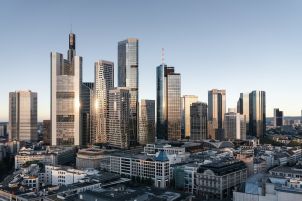Can you tell us about the origins and emergence of the concept of the 15-minute city?
The concept of the 15-minute city was born in the 1960s as a result of research by the international scientific community in Europe and the United States. The idea is to understand the relationship between time and the urban city, and even the territorial city, through the convergence of chrono-urbanism, the relationship between time and everyday life in a city, chronotopia, the way in which a place is used depending on the moment, and topophilia, the narrative around the place in which we live. In order to go beyond the 'temporal rhythm of the city', I became interested in understanding the ways we interact with a city, which meant I began thinking beyond just infrastructure. We should no longer be city planners, but rather planners of life, in order to awaken a sense of pride, urbanity and civic-mindedness.
There is therefore a great deal at stake in order to free ourselves from the constraints which force people to commute, morning and evening, and to break with the notion of anonymity which is omnipresent in the heart of ever-accelerating cities. To achieve this, I have identified the "Six urban necessities", which must be accessible within fifteen minutes on foot or by bicycle. These include living, working and shopping, but also access to physical and mental health care, culture, education and leisure. The 15-minute neighbourhood is not one where everyone feels isolated, but rather a functional place that allows inhabitants to explore and make the most of the resources in a multi-functional city.
Creating proximity means responding to the challenges of climate change, while making the city more pleasant with more vegetation. On a social level, it means moving towards greater solidarity and inclusion. Finally, in relation to economic life, it means the emergence of new services. There is no longer an interest in producing more square metres, but rather in rebalancing the existing square metres.
Which cities have already introduced the 15-minute city approach?
A number of mayors have already integrated the concept of the 15-minute city in Europe. We can of course mention the city of Paris with Anne Hidalgo, who built her re-election campaign on this model, and who had already started begun work on it with "Reinventing Paris", the "Arc de l'Innovation", "Parisculteurs" and the "Porte de Paris" projects, among others. In France, there is also the city of Nantes with "Nantes à portée de la main", but also Mulhouse, Metz and Reims. The approach has also been developed in Spain, in small towns such as Pontevedra, or in Barcelona with the concept of "superblocks", mini-neighbourhoods that favour pedestrian streets and green spaces. The practice is common in the Nordic countries, which already have a new relationship with time. In Copenhagen, for example, the five-minute district is under construction with Nordhavn.
Many cities, like Milan, Edinburgh, Dublin, Montreal, Melbourne or Bogotá have become the driving force behind this new concept and are raising awareness throughout the world. The implementation of the 2030 New Urban Agenda by the UN-Habitat organisation also contributes to this. Whatever the density of space or the time scale, the idea is the same: to give a more human face to cities by creating proximity for the benefit of all.


Creating proximity means responding to the challenges of climate change, while making the city more pleasant with more vegetation. On a social level, it means moving towards greater solidarity and inclusion. Finally, in relation to economic life, it means the emergence of new services. There is no longer an interest in producing more square metres, but rather in rebalancing the existing square metres.
How can the qualitative and quantitative benefits be assessed?
We create indicators that we call Haute Qualité de Vie Sociétale (High Quality of Social Life) to evaluate the balance between social and urban functions. These indicators allow us to better measure such variants as individuals, family, neighbourhood, work and ecological well-being, as well as the behaviour of citizens in relation to the way we live. Today, we are working to earn more, but our way of life in terms of production and consumption and our relationship to time need to be thoroughly reviewed. It is therefore a question of reclaiming the time we have in order to enjoy a better quality of life, with ourselves and our loved ones. Through lockdown, we realised in just a few hours that we could take a different approach to time and distance.
Has the Covid-19 health crisis been an accelerator for the 15-minute city globally?
The health crisis now offers a new model with the development of a new relationship with distance, the reduction in using transportation and in offering a sustainable response to the climate challenge. The Covid-19 pandemic sheds light on the relevance of the concept of the 15-minute city. The notion of proximity was essential during lockdown so many cities have been led to question this concept, particularly those of the C40, the global network of cities for the climate chaired by the mayor of Los Angeles.
This network, entitled the Global Mayors Covid-19 Recovery Task Force has chosen to focus specifically on the 15-minute city. An example of this idea in practise is Milan, the economic capital of Italy and a city that has been hit hard by the health crisis. Milan has drawn up its new road map for the post-Covid period based on the 15-minute city and moving around by bicycle. The city has as such proposed no less than 35 kilometres of roads that will be transformed into bicycle paths.
Two conferences have already taken place and a document focusing on the 15-minute city as an exit route for this new period will be used for the benefit of cities of all sizes. Cities are therefore working to create new social relationships and new affinities with time. The health crisis has shown that it is possible to live and work differently. More than ever, the 15-minite city, which is decentralised, polycentric and connected, could be the resilient answer we are looking for.





